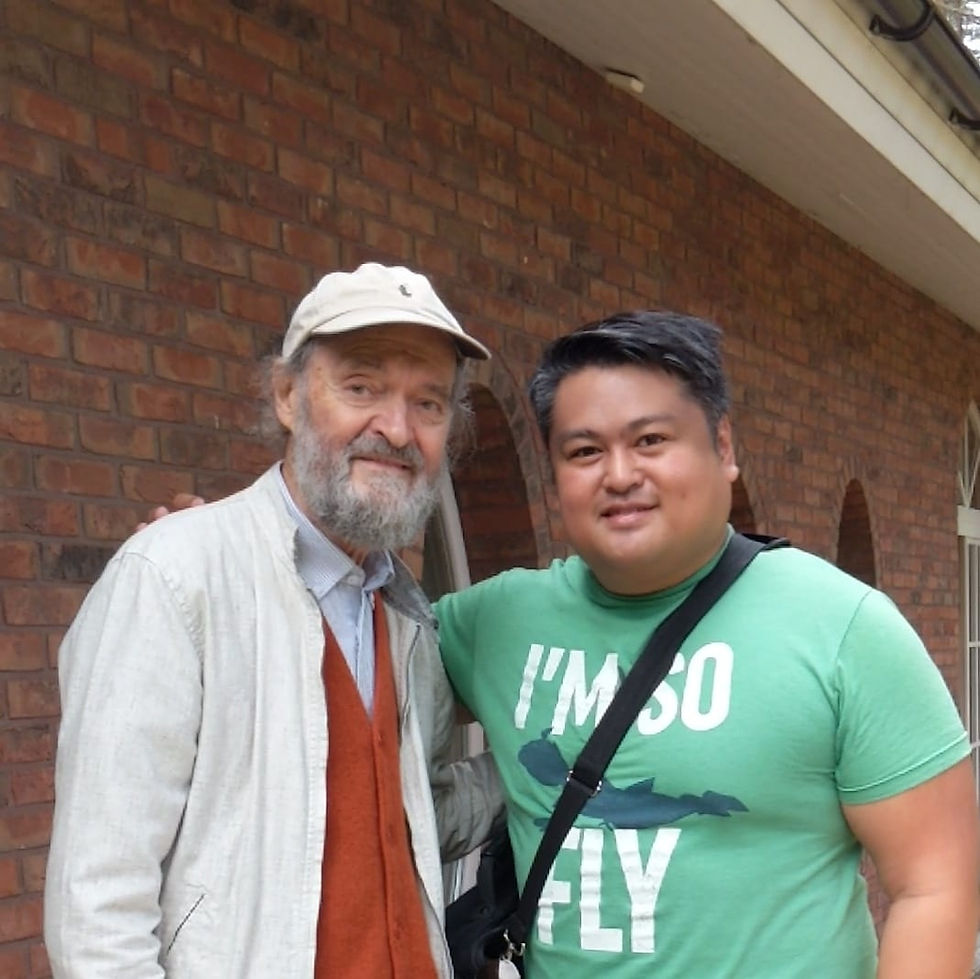Arvo Pärt’s sound world
- Markdavin Obenza

- Dec 5, 2014
- 4 min read
Updated: Apr 16, 2021

I fell in love with the music of Estonian composer Arvo Pärt (b.1935) right away. I was seduced by his meditative and contemplative style, it was a new sound. It was a pleasure looking deeper into this music for my master thesis at the University of Washington in 2006. I am so thankful to Music Theory Professor Jonathan Bernard for his guidance during my deep dive into an analysis of Pärt's music.
Patterns
One of the major sources of information on Pärt is Paul Hillier’s biography on Arvo Pärt published in 1997. Hillier discusses Pärt's obsession with patterns. If you listen to Spiegel im Spiegel it sounds like just a series of arpeggiated triads over a stepwise scale.
Let's look at text patterning in another piece, Summa.

You could probably guess how the rest of the song patterns out. One could come up with various reasons for the apparent anomaly in the first line containing only 7 syllables not aligning with the 9-14 patterning. Pärt might have wanted the first line to be thought of something separate, like perhaps an incipit sung by a cantor? When we take a closer look at his music, we see that the patterning is more intensive.
Tintinnabuli style

Another compositional technique Pärt employs is the tintinnabuli style. A technique that allows for only a limited number of harmonies. Tintinnabuli, meaning “a small bell,” is a relatively simple technique consisting of a pairing of two voices, a melodic voice (M-voice, scalar) and a tintinnabuli voice (T-voice, arpeggiated). The M-voice in the example is represented as the black noteheads, usually stepwise and in some kind of pattern, and the T-voice voice is represented in the example as the white noteheads.
According to Paul Hillier the T-voice can only be the first or second nearest note in the triad above or below the M-voice pitch or in alternation note by note. Taking that into account, example 1.1a has all the possible positions of the T-voice in relationship to the M-voice.Tallying up the number of unique harmonies possible from this restrictive system, one realizes that it is quite limited indeed.
So far, we have two important compositional elements to Pärt's music - patterns and the restrictive tintinnabuli system. However, these elements are incredibly different from one other. Patterns can go on forever. One might expect (quite reasonably so) patterns to generate a diverse collection harmony. However, the tintinnabuli system seems so restrictive that you wouldn't think that there would be much room for patterning. I found it hard to imagine that Pärt could execute both elements cleanly at the same time. Does he favor one over the other?
Pärt’s Fratres seemed like a good candidate for analysis. It is a simple and repetitive piece that sounds like it was composed out of patterns and a restrictive harmonic system. I analyzed every vertical slice of harmony in Pärt’s Fratres using set class theory (where you measure the distance from the bottom note by half steps, ie. [C, C#, E] = [0, 1, 4]). (This happened while I was dating my wife Margaret. I would sit in the coffee shop at Capers in West Seattle while she worked 8 hour shifts – I did analysis the whole time, it was tedious work.)
Before discussing the results of the harmonic analysis, here are the rules Pärt sets up:
1. Three different pitches. No doublings.
2. Two M-voices in tenths (or thirds) from the C-minor "harmonic" collection against one T-voice (tintinnabuli voice), member of the G-minor triad.
My plan was to create two lists - one with the possible harmonies based on the patterning Pärt sets up and another with the actual harmonies. In Fratres, there are eight possible harmonies [013], [014], [015], [024], [025], [026], [036], [037], of which Pärt only uses five [015], [025], [026], [036] and [037]. See example 3. (To understand the set class notation, make sure you put the notes in their closest arrangement). The T-voice is on the bottom staff.

We see that Pärt avoids certain harmonies by breaking the pattern he sets up. Pärt manipulates the T-voice to maintain a restricted sound world that contains only five of the eight possible harmonies. In other words, Pärt doesn’t really follow through on the patterning completely, just only if it doesn’t create unwanted harmony. *** Why go through so much trouble creating complex patterns and not follow them through?
Minimalism is an American phenomenon characterized by a strict adherence to formula, an approach that yields complex music, much like serialism, both compositional techniques of the modern contemporary style that dominated in the decades following World War II. While Pärt's music shares some characteristics with minimalism, his style was born out of isolation and through a spiritual approach favoring simplification and a reduced sound world almost in reaction to, at the time, the prevailing modern contemporary styles that were producing increasingly complex music.
Pärt, along with John Taverner, Henryk Górecki, and a number of others, fall under a group called mystic minimalists. They favor a radically simplified sound world, a refocus on music's most basic elements - sound and silence. Music born from these philosophical tenants has an effective way of reaching the masses, as Arvo Pärt was the world's second most performed living composer in 2019, and has been a helpful gateway into early music which we know had an influence on Pärt himself.
“The most beautiful and most profound emotion we can experience is the sensation of the mystical. It is the sower of all true science… to know what is impenetrable to us.”
-Albert Einstein *** If you would like to read the full chapter on my thesis, "Analysis of Arvo Pärt's Fratres (1977_1985) and Summa (1977) and the harmonic ramifications of the tintinnabuli style," feel free to download here:

Me and Arvo Pärt (2018), while on a tour with Mägi Ensemble.




Comments